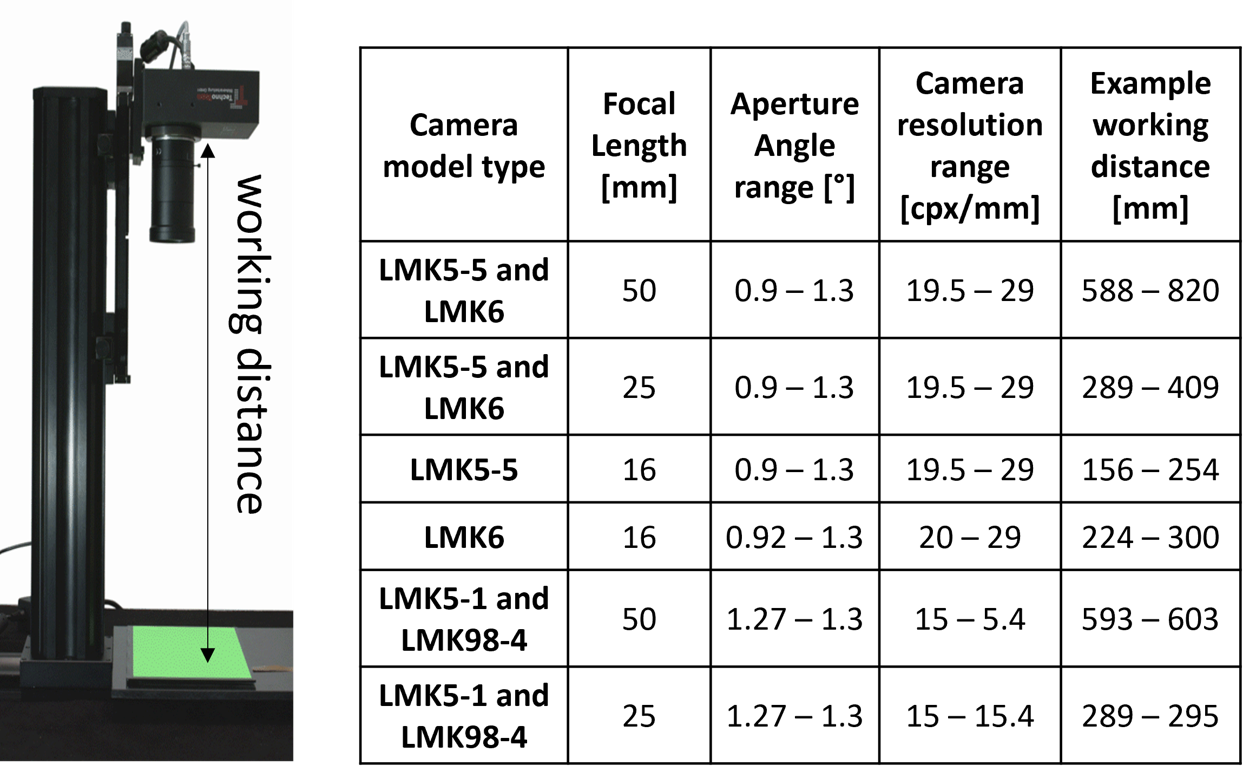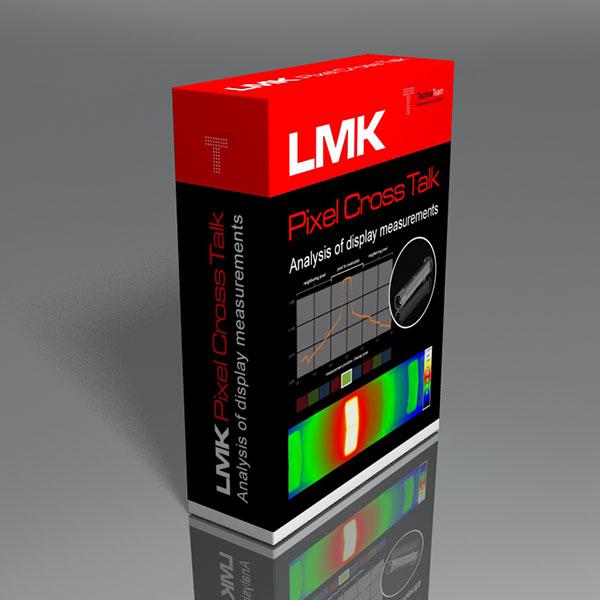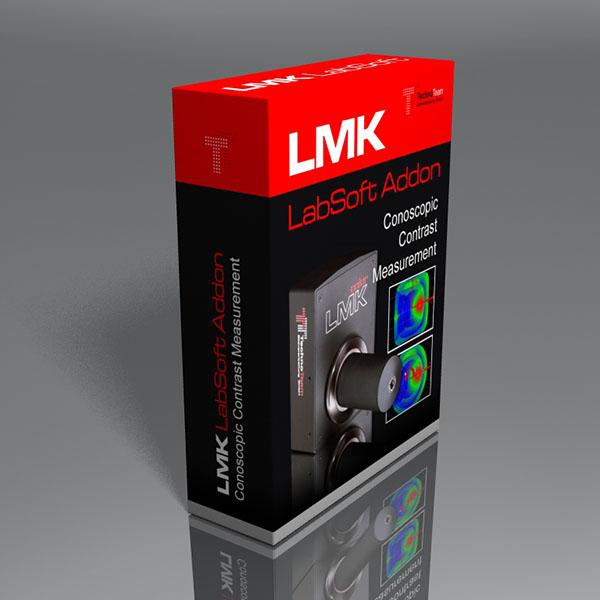Tabelle zur Einrichtung der Sparkle-Messung für verschiedene (BlackMURA-kompatible) LMK-Systeme
Gleichförmigkeit ist ein wesentliches Qualitätskriterium für moderne Displays. Dies gilt auch für hochfrequente Ungleichförmigkeiten wie DeepGreyMura bei OLEDs oder Anti-Glare-Layer (AGL) verursachtes Display Sparkle. Im Jahr 2019 startete TechnoTeam zusammen mit zwei großen Unternehmen aus der Automobilindustrie ein Joint Venture zur Messung des Display Sparkle. Das Ziel war eine:
- Sparkle-Messungen mit BlackMURA-konformen ILMDs/Kameras
- Sparkle-Messungen ohne Entfernung des Anti-Glare-Layer
- Hohe Korrelation zur menschlichen Wahrnehmung
Heute wird unsere Lösung zur Messung des Display Sparkle in den Display-Spezifikationen großer Automobilhersteller eingesetzt. Unser Sparkle Add-On kann mit allen LMK5 und LMK6 Kameras und allen Standardobjektiven ab 16 mm Brennweite verwendet werden.

Entsprechend der genutzten Kamera/Objektiv-Kombination wird ein initialer Messabstand eingestellt (siehe Tabelle). Anschließend erfolgt eine Ausrichtung gemäß dem BlackMura-Verfahren, welche einfach und bequem mit unserem Live-View-Modus durchgeführt werden kann. Hierbei werden auch die Sparkle-relevanten Setup-Parameter "Öffnungswinkel" und die "optische Vergrößerung" berechnet. Allerdings wird im Unterschied zu einer BlackMURA-Messung direkt auf das Display fokussiert (innerhalb des Moiré). Danach werden Leuchtdichtemessungen eines grünen Testbildes durchgeführt und der Sparkle-Wert in Prozent berechnet. Der Einfluss von Moiré, der Pixelstruktur oder Staub und Pixelfehlern auf den Sparkle-Wert wird durch unseren Frequenzfilter-basierten Algorithmus korrigiert. Die Standardparameter sind auf den Betrachtungsabstand von automotive Displays eingestellt. Durch unsere innovative Frequenzkonvertierung können wir algorithmisch den Effekt unterschiedlicher optischer Vergrößerungen auf den Sparkle-Messwert korrigieren, was auch in flexiblen Aufbauten zu einer hervorragenden Reproduzierbarkeit führt.
Da Sparkle-Werte sehr empfindlich auf die Fokussierung reagieren können (unscharfe Bilder des Sparkle reduzieren den Sparkle-Wert stark), haben wir den Distanz-Fokus-Scan entwickelt. Mit dieser Methode kann bei allen LMKs (insbesondere bei Objektiven mit manuellem Fokus) nach dem Maximum gesucht werden, bei dem der Sparkle am schärfsten abgebildet ist. Dieser Maximumwert ist reproduzierbar und stellt außerdem sicher, dass auch der Sparkle bewertet wird, den der Mensch beobachtet. Dazu wird lediglich eine einfache motorisierte Linearachse benötigt, die zusammen mit dem Sparkle Add-On bestellt werden kann. Natürlich erlaubt das Add-On auch die Verwendung externer (sogar manueller) Achsen. Alternativ kann auch ein LMK Position System verwendet werden.

Typische Kurve eines Sparkle-Scans mit Distanzfokus von der LabSoft.
DISPLAY PACKAGE
Dieses Add-on ist Teil des Add-ons Display-Paket. Es kann separat oder in Kombination mit den anderen Display-Add-ons bestellt werden.
Die anderen Display-Add-ons sind unten verlinkt.
Publikationen
International Display Workshop (IDW 2022)
Journal of the Society for Information Display
Society for Information Display
International Display Workshop 2021
- Typ:
- Add-On
- Anwendungen:
- Automotive Display
- Messgröße:
- Lichtmessung
- Aufgaben:
- Entwicklung & Industrie



